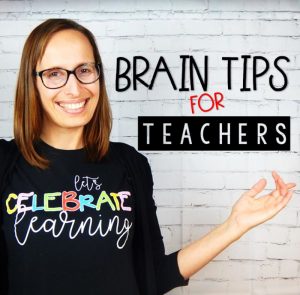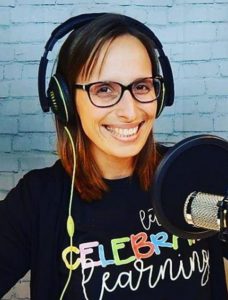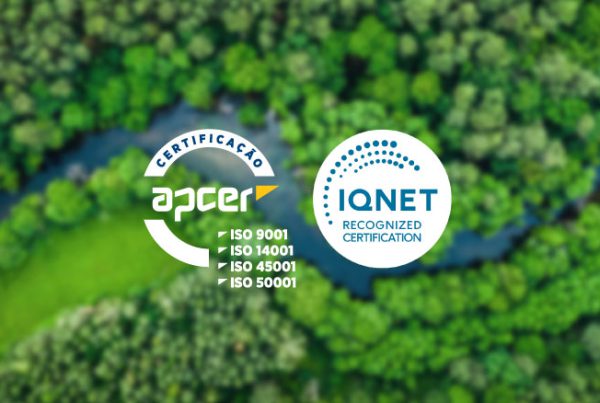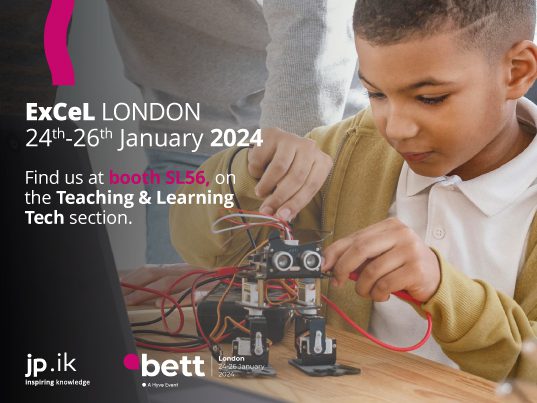
There are so many good trends making appearances on social media and believe me, I am the first one to do or try everything I see on Instagram and Pinterest!!!
I think it is fabulous to have these tools at hand so we can improve as teachers and humans!
But, there is always a but in everything, right?! All these perfectly colorful, angled, and filtered images might give us the impression that those are the strategies that REALLY work! After all, students LOVE the fun activities, eye catching displays, and happy music! Everything is so visible and therefore we are sure learning is taking place and IT IS!!!! Of course!!!
The problem though is when we avoid using other not so visible strategies that are as highly effective! The brain tips that I will share with you are really easy to implement, FREE, highly effective, brain-based, and they are so so many that all of your students can benefit from them.
Before we dive in, let me tell you…. about Me:
My name is Yanina. I am a multigrade teacher in Illinois. I am a curriculum designer and a PhD student who loves bringing Cognitive Neuroscience findings to my classroom in the most practical ways. I love creating units for TpT applying all these strategies and talk about them on social media, seminars, and on my podcast! I love the simple life and walk barefooted on my farm with my children and my many animals!!! I am a country girl!
Now, let’s dive in!
What are brain tips?
I call brain tips to the many different FREE and EASY strategies we can implement in our classroom that are HIGHLY effective! Some of them are MUSIC, MOVEMENT, EMOTIONAL LINKS, IMAGINATION, MNEMONICS, STORY-TELLING, RELEVANCE, LOVE, DE-CLUTTER, CHANGE, NATURE, FREQUENT BREAKS, REVIEW, RESET, READING, GIVING, WAITING, SILENCE, DOODLING, WALLS, ART, PRAISE, SLEEP, TEACH, DOING LESS, HUMOR and so many more. New tips are constantly added on my Instagram page!
The organ with and on which we work the most is the brain! We use our brains as teachers and we work with our students’ brains, as well!!!
We know about the power of music and movement, and we should constantly use it. But in doing so, we can’t forget other powerful strategies. For example, the power of our classroom WALLS! Classroom WALLS are the third teacher!!! I was shocked when I learned that. I knew that walls affected concentration or promoted distraction, but I didn’t know that they can actually TEACH, and teach more than what we imagine! Walls should reflect and celebrate student learning and diversity. Walls need to invite students to be creative, curious, and take risks. Find balance between bright and calm wall colors. Avoid cover them completely, laminated posters, and super bright colors. Brain likes patterns, even on walls. De-clutter your walls as much as possible! Walls affect memory, focus, emotions, mood, mental clarity, and energy levels.
This session is not a recipe for running your classroom, because YOU KNOW BEST what your students need. You will have to do what works for you and your students!!! In this session, I want to inspire you to look for the many, many, many simple, free, yet powerful strategies that you can use in your classroom!
By using all these tips, you will see how engaged your students can be and how their learning experience can be taken to the next level, without having to do huge classroom transformations, which are great. I want you to know that there are so many more powerful strategies that are kid and brain friendly! I invite you to try new things and see how they work and benefit your students. There are sooooooooo many things we can do that are SUPER effective. We should be INTENTIONAL about using as many strategies as possible and evaluate them in an objective manner to find out if our students are really benefited from them or not!
Let’s talk about a few other tips!
Another element that plays a huge role is our classroom is LIGHTS. Lights and depending how we use them, affect concentration, productivity, relaxation, mood, and overall health. When do you want your students to be actively working and being highly productive? Morning or afternoon? You can choose what lights to have on, depending on the energy levels you would like to see in your students.
In my classroom, right after lunch, we avoid bright lights so we can enjoy reading in a calm way. After that all lights are back on so we can finish on a high note before we go home! You can try something different, but be aware of how lights affect your students in many different ways! Try new things, study its effects, and keep improving to benefit your students!
Side note: screen light used more than 2 hours a day affects the structural and functional brain regions involving emotional processing, executive attention, decision making, and cognitive control.
Another tip now, after you hear it you might think it is so random!!! I know I am randomly mentioning different tips, because your students are affected not only by instruction and classroom environment, but by so many other elements. I said it and I will say it again, let’s be intentional and mindful of everything we do in our classrooms. Let’s take note about how these things affect our students cognitively and emotionally!
Our next tip now, SMILE! When we smile, students feel safe, liked, and loved. SMILING actually PROMOTES CREATIVITY AND PRODUCTIVITY!!!! Don’t we want that? Smiling makes you seem courteous, likable, less stressed, and competent. What I love about this tip is that it is FREE and EASY to use, but with HUGE results!!!
Another tip that has HUGE cognitive results, but it doesn’t come with confetti is GIVING STUDENTS THE TIME AND SPACE TO ASK QUESTIONS. YES!!! Let your learners ASK QUESTIONS. For students the WHY is more important than the lesson! When your learners ask questions, not just the WHYs, but any kind of questions, it shows what and how they REALLY think, more than the answers can do! What you can do is to ask after you explain a lesson to write 10 questions they have or that their friends might have! You can collect them and answer them next class or read them randomly so they can discuss those questions and their possible answers as a class or in groups! I can guarantee you that the learning experience will go to another level!!!
And speaking about bringing learning experiences to other levels, let’s talk about the power of letting your students TEACH! Students learn better when they teach.
Teaching another person is what leads to long-term retention and deeper learning. When students prepare to teach, they tend to seek out key points and organize information into a coherent structure. They also develop a deeper and longer-lasting understanding of the material. Students better monitor their understanding & misunderstandings.
You can choose the lesson or divide the unit into minilessons so groups of students can teach it! When learners teach, they go above and beyond to understand the story in such a way that they are able to teach it! As the saying goes, “When you want to really UNDERSTAND and INTERNALIZE learning, TEACH!†The preparation that goes into teaching a concept, and idea or skill, is such a powerful LEARNING experience! It is very unlikely to forget something you teach!
Another tip that is HUGE in terms of impact and lasting memories is STORY TELLING!!! Stories activate multiple senses in the brain; motor, auditory, olfactory, somatosensory and visual. Stories use words that spark the senses making it easier for the brain to imagine, elaborate and recall. Each person develops their own unique experience from these experiences. Stories are easier to recall due to the power of their sensory associations. Stories create characters we can identify with. Stories invoke emotion which is a neural activator. Stories come in recognizable sequence – introduction, rising action, climax, falling action. Stories provide motivation for action. Storytelling is one of the most powerful techniques we have as humans to communicate and motivate. Cognitive science has long recognized narrative as a basic organizing principle of memory.
Another tip that I truly love is DOODLING!!! Doodling is the art of THINKING! Doodlers create symbols in their brains and make ideas tangibles. Doodling is essential to expressing spontaneous concepts and emotions. Doodling promotes attention, memory, enjoyment, and relaxation. As you lecture, tell stories, have your students listen to audio, let them doodle! When we finish the story, the audio, and the doodling we share our doodles in groups. I love their reaction when they notice that they listened to the SAME EXACT story, and they pointed out different things! That shows us a lot about as we are as learners, we are all different, absorb different things and internalize learning in different ways!
Another tip that is can be applied in both instruction and environment is DECLUTTERING! We need to constantly be decluttering, because clutter contributes to distraction, stress & anxiety in students and teachers.
So, here are some ideas:
Hide necessary materials in bins, cabinets or behind curtains.
If an item doesn’t directly impact student learning, store it or get rid of it!
First organize books. Then supplies. Finally, furniture!
Less is more. Leave empty spaces on walls.
Have an organized space for student materials.
Bring plants, lamps, natural, incandescent, or soft lightning.
Put posters at students’ eye level.
Limit glaring, laminated and bright posters.
Another tip that I absolutely love is MOVEMENT. Flexible seating or not, we need to provide students with opportunities to move as much as possible.
The benefits?
Better Mood
Increase in Energy
Better Attention
Improved Memory, short AND long term
Increase in brain mass
IMMEDIATE EFFECT ON THE BRAIN
Let me share a quote I love: “Rather than trying to get children to sit still and stop fidgeting, we must design learning spaces that embrace children’s movement and action as NECESSARY prerequisites for developing attention.†The Curiosity Classroom, pg. 132 …and another one!
MOVEMENT is THE most Transformative thing we can do for our brains.†Neuroscientist Wendy Suzuky.
And finally, I will share the last tip. But before I do that, let me tell you that you don’t need to use all the tips I shared here or on my social media in one lesson or unit! That would be overwhelming! What we should do is to make sure we don’t use the same ones over and over, because by doing so we might leave some students’ interests out! Not all students are into singing, dancing, and playing games all day long. Some students will really enjoy doodling in silence. Doodling is actually the art of thinking, and all students should have that chance!
So, when you are planning your lessons or units or your annual plans, have all these tips at hand so you can sprinkle your instruction with them! I have great news for you, all these tips and more are available on my profile so you can download them for free! Feel free to print them, takes notes on it, share them, and use them!
OK, we have come to the last tip! REMEMBER THERE ARE SO MANY MORE ON MY INSTAGRAM PAGE!
The last one is HUMOR! Take HUMOR more SERIOUSLY!!! Be funny at times! Of course, avoid “hurt†humor & sarcasm. Only healthy humor! Add humorous items to tests, homework or class assignments. Display humor quotes. Keep a cartoon file. Have Joke Days! Ask students to add humor into writing assignments and to bring in books they think are funny. Humor reduces stress & boredom, connects learners & increases attention. Wow, give me all that!!!
OK friends, thank you for reading this article. I hope we can keep the conversation going with YOU on my Instagram: @lets.celebrate.learning Also, the link on my Instagram page profile will take you some other links, one to my podcast where I bring experts on each tip, many that were not shared in this presentation, another link to my Facebook group where we discuss all these brain tips, ask questions, bring experts, share exclusive content and many other exciting things, another link that will take you to all the units I created having all these brain-friendly tips in mind, and last but not least, to my COURSE BRAIN TIPS FOR TEACHERs!!!!
I hope to stay connected with you to keep celebrating learning with your students and as teachers!

Yanina Jimenez is a multigrade teacher in Illinois. She is a curriculum designer and a PhD student who loves bringing Cognitive Neuroscience findings to her classroom in the most practical ways. She loves creating units for TpT applying all these strategies and talk about them on social media, seminars, and on her podcast! She loves the simple life and walk barefooted on her farm with her children and her many animals!!! She is a country girl!




